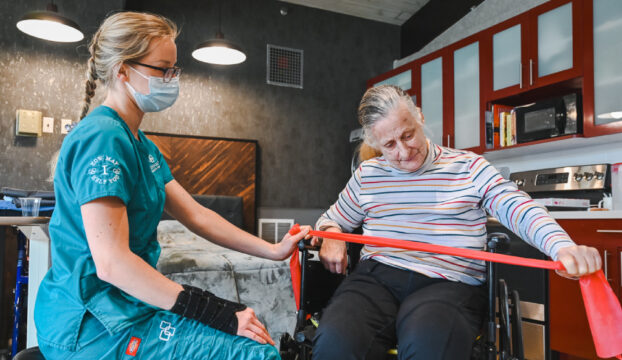Facilitating Recovery With Tailored Fitness Plans in Therapy Programs
Wiki Article
Rehabilitation is an essential procedure for individuals who have undergone injuries, or other medical challenges. Recovery programs play a vital role in supporting these individuals to restore their resilience, improve movement, and return to their routine activities. Customized exercise planning is a key element of effective recovery. This means that workouts are specifically structured to address the unique requirements of each individual. By concentrating on personalized therapy programs, rehabilitation programs can accelerate healing and promote improved wellness outcomes.
One of the initial stages in developing a customized exercise plan is assessing the patient’s condition. Medical professionals conduct assessments to understand the specific limitations and capabilities of each person. This might involve functional assessments, discussions about health history, and goals for rehabilitation. For instance, an athlete recovering from a leg condition may have different requirements than an senior person healing from joint surgery. By acknowledging these differences, practitioners can develop an therapy program that targets the unique aspects of each situation.

Incorporating various types of workouts is essential for successful recovery. Strength work , mobility exercises, and cardiovascular exercises all serve vital roles in recovery. Strength exercise helps restore muscle and enhance endurance, which is particularly important after extended periods of sedentary time. Flexibility exercises increase range of motion and reduce rigidity in joints. Cardiovascular workouts, find this like brisk walking or cycling, improve general fitness and support cardiac function. A well-rounded fitness plan that includes all these components can greatly aid in the rehabilitation journey.
Monitoring progress is another essential element of recovery programs with customized fitness prescriptions. As patients participate in their customized programs, medical practitioners observe improvements and make necessary modifications to the plan. This ongoing evaluation guarantees that moved here the workouts remain beneficial and appropriate as the individual advances. Setting defined milestones can also motivate individuals during their rehabilitation process. Achieving incremental objectives builds confidence and encourages commitment in adhering with the rehabilitation program.
Ultimately, improving rehabilitation through personalized exercise prescription demands partnership between medical providers and individuals undergoing recovery. Clear communication is key to understanding how each individual responds throughout their rehabilitation process. By working together, both parties can address any obstacles and acknowledge achievements along the way. Tailored exercise programs not only help patients heal physiologically but also add to their emotional well-being by fostering a sense of achievement and independence as they work towards their wellness objectives.